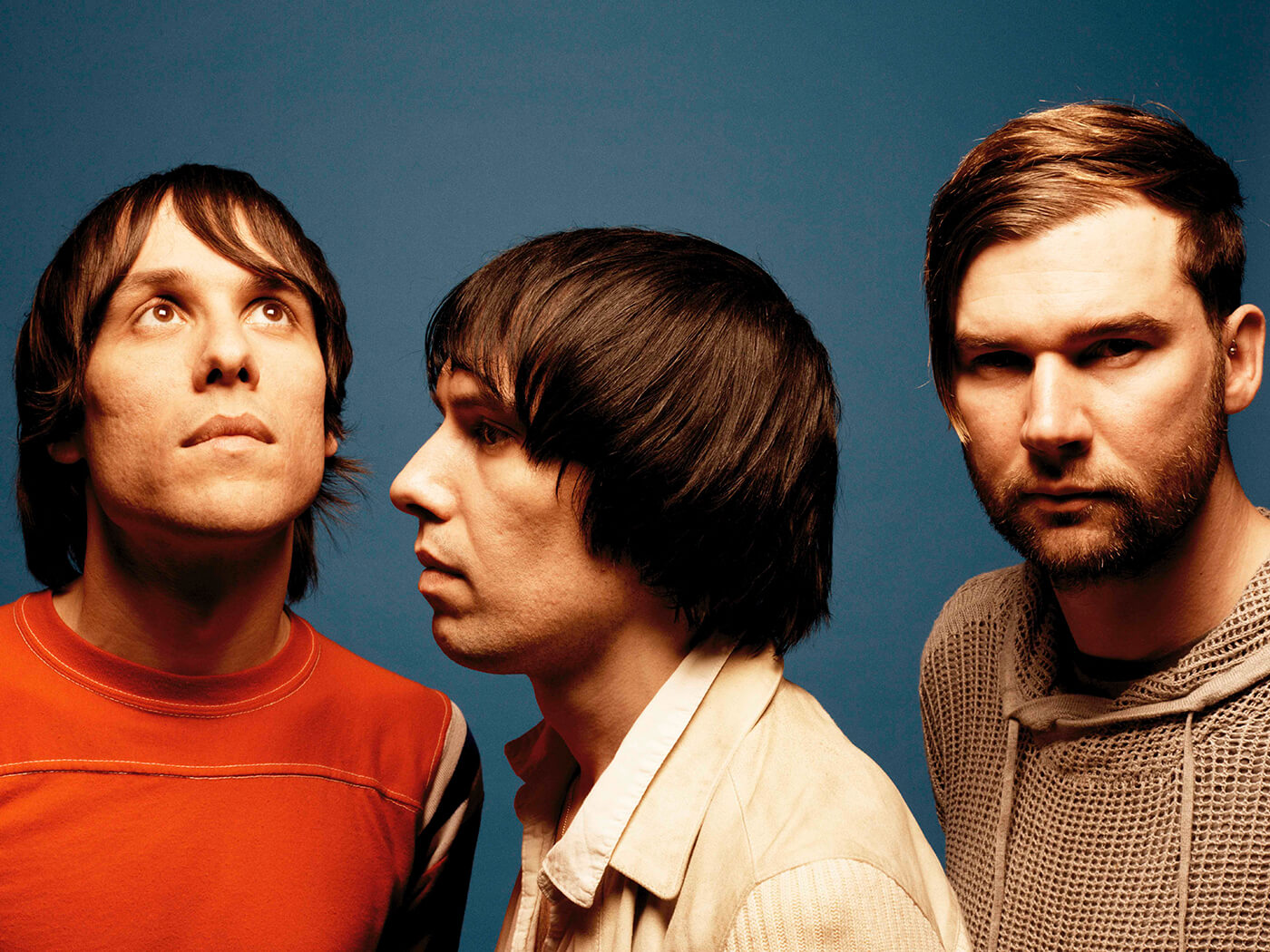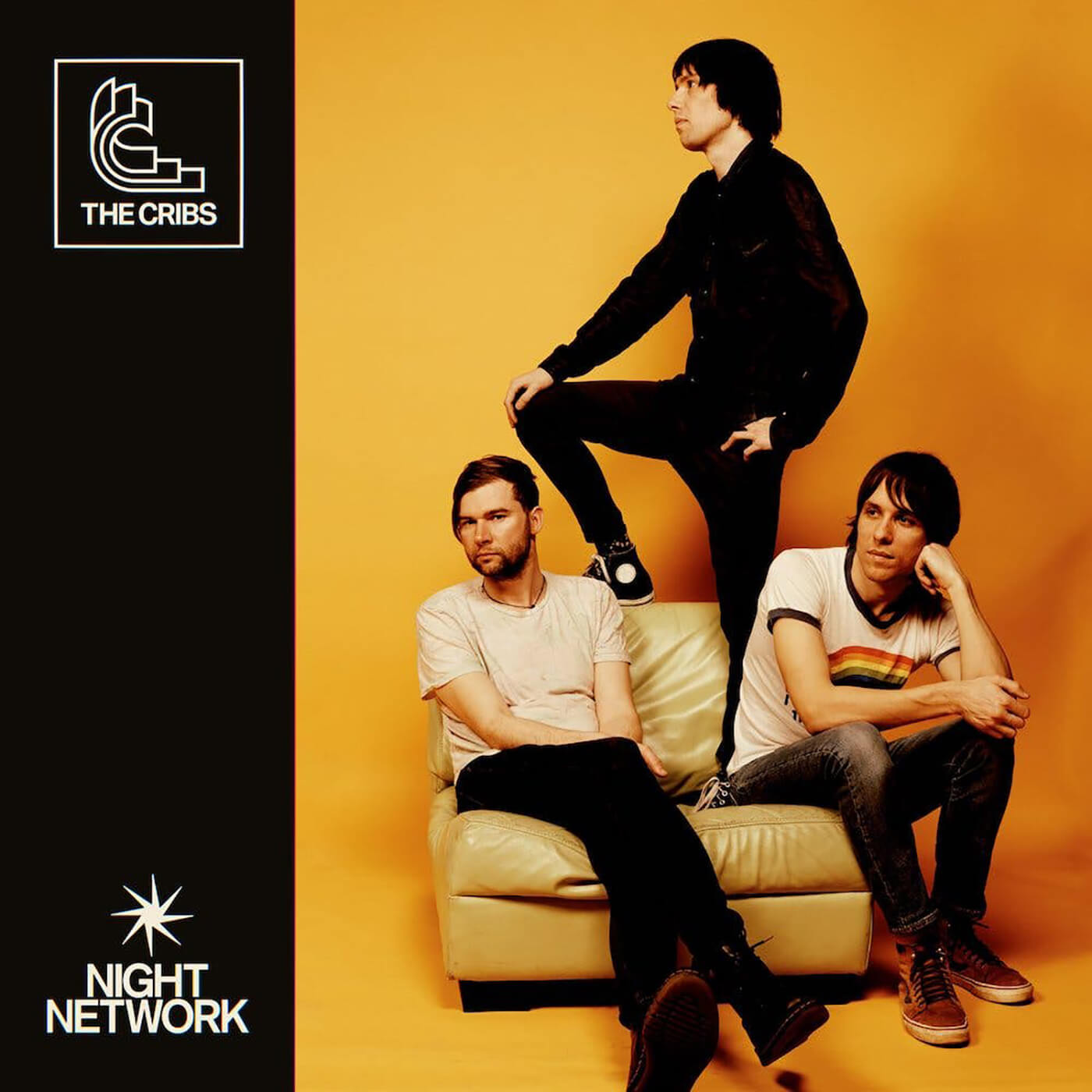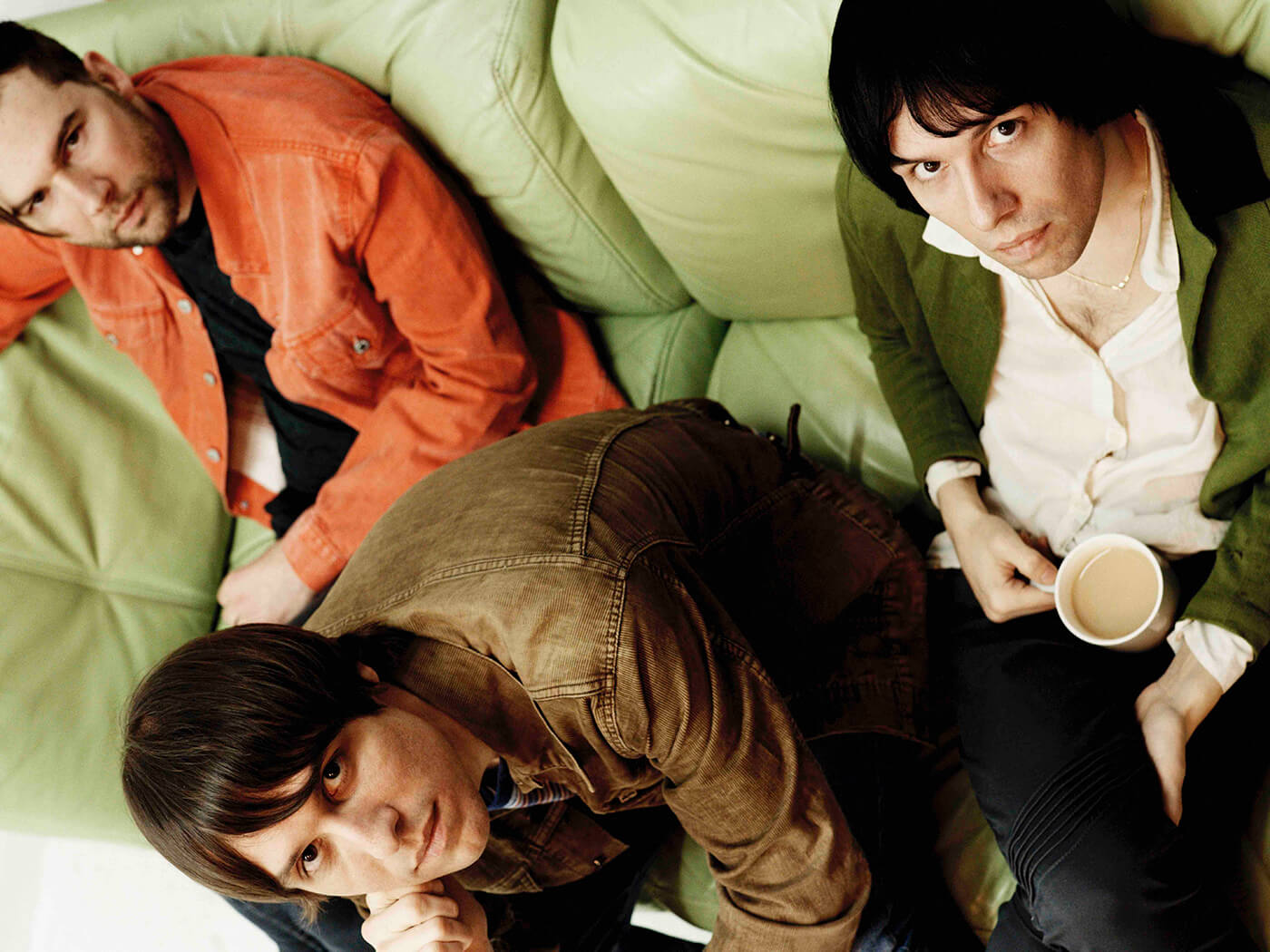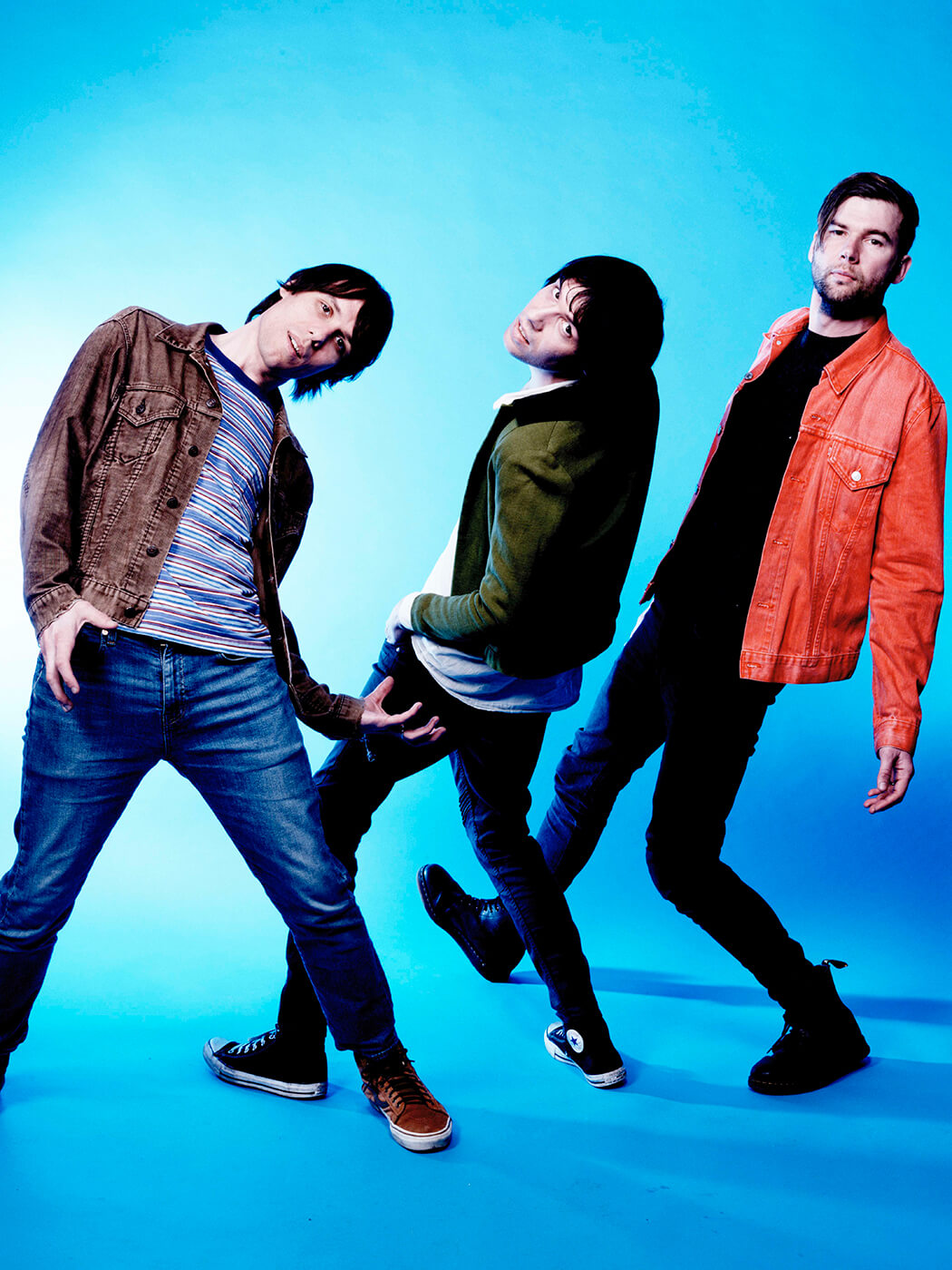How Kurt Cobain inspired The Cribs and Dave Grohl saved them from oblivion
Cribs guitarist Ryan Jarman explains why being a musician is something worth fighting for and what it’s like being in a band with Johnny Marr.

It all started with Nirvana and it very nearly ended in the company of the Foo Fighters. Three decades ago, in a Wakefield living room, Ryan Jarman and his brothers Gary and Ross sat transfixed by the site of Kurt Cobain tearing away at a Fender Mustang on TV. In what seemed like the blink of an eye, it was June 2018, backstage at Manchester’s Etihad Stadium, and it looked as if The Cribs had just played their final show. Step forward the undisputed nicest guy in rock, Dave Grohl, to save the day.
Having released their fourth successive Top 10 album, 2017’s Steve-Albini engineered 24/7 Rock Star Shit, relations between The Cribs and their management company had broken down. The band were mired in legal quicksand and surprised to discover they didn’t own any of the rights to their entire back catalogue. Unable to record while a dispute that threatened their very existence as a band rumbled on, most frustratingly for one of the UK’s most visceral live acts, they were prevented from touring. Booked for a one-off stadium show with Grohl’s Foo Fighters, the Jarman brothers were emotionally exhausted, financially imperilled and drowning in paperwork. The end appeared nigh.
“It was the perfect final gig for us, we played the show and it went great,” recalls Jarman, a Mustang obsessive who now lives in New York. “We were chatting to the Foo Fighters afterwards and telling them what the situation was. Dave was like, ‘Look, that’s not why you become a musician, this isn’t what you dream about. Fuck all that, get it sorted and come out and make a record in our studio’.
“It was exciting, it gave us an added incentive and we knew that if we didn’t take Dave up on the offer we’d always regret it. We still had so much that needed sorting out, but it gave us the incentive to keep ploughing through it all. Getting to Dave’s studio and making a record seemed like the light at the end of the tunnel.”
That record, shaped over two weeks in April 2019 at Grohl’s Studio 606 in Los Angeles, is Night Network, a blast of sun-drenched classic songwriting sprinkled with joyous Motown-referencing melodies, riffs to die for and some of the most immediate choruses the Jarman brothers have ever produced. While they address the industry nightmare they were trapped in on dreamy opener Goodbye, awash with swoonsome Beach Boys harmonies, the rest of the record couldn’t sound less like the troubled circumstances under which it was written.
“I’m really happy we got to the other side of it and have the ability to still be musicians,” says Jarman having just emerged from two 14-day quarantine spells either side of a live-streamed show at Liverpool’s iconic Cavern venue that was the band’s first gig in nearly two years.
“It was a miserable couple of years, but ultimately the principle of the matter is what kept us going. Our first album cost £900 to record, we saved up for that working in a factory, and there was no way we were going to allow it to be owned by a major label. It’s surprising it came out the way it did, it would have been so easy to write an angry, bitter record. The writing process was something we were doing as escapism; it was the only enjoyable thing we were doing at the time.”
Jarman’s white 1970s Mustang is pretty much the only guitar on Night Network, with a fleeting appearance from a 1960s Epiphone Coronet he keeps close by his side at home in Queens. Both were plugged into an Orange AD30, with the only pedals an Ibanez TS9 Tube Screamer and on I Don’t Know Who I Am, a track featuring Sonic Youth’s Lee Ranaldo, a Mr Black Eterna reverb. Despite being a fan of the Electro-Harmonix Stereo Polychorus and an occasional user of a Fulltone OCD, Jarman’s avowedly not a ‘pedals guy’ and admits to feeling bemused by support bands who turn up to gigs with pedalboards that fill half of the stage.

“I understand that compulsion to want more options, but I think the less you have, the more you have to concentrate on your parts,” he says. “If you don’t have any of that stuff, you’ve got to work harder to buzz off what you’re playing, and the only way you’ll get a kick out of what you’re playing is if you’ve written a cool part. Having too many pedals can get in the way of that.”
Queen of hearts
Back in Wakefield in the 80s, Jarman and his twin Gary, both grade eight violinists, grew up as avid Brian May fans. He remembers making tapes of their own guitar playing on the cassette deck they hooked up to their Sinclair Spectrum computer, and splicing in the crowd noise from Queen’s stadium shows. Yet in a pre-internet age when their guitar knowledge extended only as far as Strat and Tele clones, the sight of Cobain playing a custom 1993 Mustang was the real lightning bolt moment.
“After Queen, Nirvana were our second big epiphany,” he recalls. “They piqued our interest in offsets. I saved up all one summer washing dishes at a golf club and bought my first proper guitar, a Fender Jag-Stang when it first came out. I wasn’t a huge fan of it, even though I’d saved up for it all year, something about it felt a bit weird. I sold that and went to a second-hand guitar shop in Doncaster and bought a cheap 70s Mustang. I love that guitar, it’s so easy to play and such a simple guitar.
“I would do certain modifications to my guitars to lock them down and make them as solid as possible, and the Mustang was so solid once you had it set up properly. It’s always been my favourite Fender guitar, it’s simple and reliable and looks cooler than a Strat.”
The Jaguar and Mustang have continued to dominate Jarman’s affections to the point that he ended up with a limited-edition signature model that combines the best of both worlds. The Squier FSR Ryan Jarman was born after the guitarist showed a design he’d drawn up on Photoshop to Fender representatives at a party in 2012. The hybrid ‘Mus-Uar’ has a Duncan Designed single-coil Jaguar neck pickup, bridge humbucker, vintage-style Jazzmaster bridge and sizeable 60s-referencing headstock.

“Fender gave us an endorsement years ago, which was exciting,” he says with a smile. “A lot of our guitars were getting broken from so much touring. Instead of having to glue them back to together, they would give us free ones, generally Jaguars or Mustangs, and I always liked elements of both guitars, so I designed a hybrid that was basically the opposite of the Jag-Stang.
“Fender had a party after Reading, and I showed them my design. They just freaked out and really liked it. I really like the behind-the-bridge capabilities on a Jaguar. I know it’s a cliché and everyone does it, but it’s just handy. I wish they’d make more of those guitars. People on social media ask me about them all the time, and I’ve only got two myself, I could do with some more.”
While his own guitar has become Jarman’s main touring instrument, another Fender signature model he had a hand in designing has proved more popular – the celebrated Johnny Marr Jaguar. The Smiths legend joined The Cribs as an additional guitarist on 2009’s Ignore The Ignorant album and subsequent tour, and Jarman had input into his signature’s spec. It hasn’t yet been enough to prompt Marr – famous for gifting valuable guitars to his musician friends – to give one to his former bandmate, though.

“It’s weird actually, he really wanted some of my guitars,” says Jarman, laughing in mock indignation. “He kept asking me for my white 70s Mustang. He designed the Jaguar while he was in the band, and I don’t think he’d mind me saying we all chipped in with ideas. He was supposed to give me the first one and he never gave it to me, I feel a bit bummed out by that. I sent him one of my signature guitars, but I never got one of his…”
The experience of sharing the stage with one of his all-time guitar heroes was an unforgettable one, though, initial misgivings about overlap between the two players’ similarly busy melodic approaches evaporating immediately.
“I came to The Smiths late, but it was because of Johnny’s playing, how melodic his parts were,” Jarman says. “His guitar playing was like the centrepiece of the music. When we started playing together, I remember being a little bit concerned because both of us consider ourselves to be lead guitarists and like writing melodies, but we had a really intuitive way of playing together. We never sat down and worked on parts or said, ‘I’m playing lead here so you get of the way’. We just intuitively wove in and out of each other.”
Network connection
Marr now long-since departed, that melodic approach remains in sparkling evidence on Night Network, the band’s eighth studio album since they formed in 2001. How, then, did his playing became so melodic?
“Some of it came down to the fact there was just me, Gary and Ross,” Jarman answers. “In a three-piece, as a guitar player you had to do a little bit more. If you were just playing powerchords and holding it down at the back, it wasn’t particularly interesting and seemed limiting.

“My first influence was Brian May and he plays a lot of melodies. That’s what I always thought a guitar player should do, but we’ve always had this thing in the band where when we’re jamming and writing songs in the rehearsal room we do it without the lyrics on top, so I write what I think is the best melody for that piece of music on the guitar, then my brother has to beat it with his vocal melody and that really helps push us to write more melodically.”
While Jarman reveals that there are songs left over from the Night Network sessions, and some new ones already under construction, what he’d really love to do in 2021 is get back on the road. His home in the Woodside neighbourhood of Queens was close to the epicentre for Covid on the East Coast and the last year has been psychologically draining. At times, he says, “the ambulances never stopped, it was post-apocalyptic.”

Life is slowly returning to normality, though. As we talk, his girlfriend returns from an estate sale with a vintage 70s Ampeg B-15 bass head she’s picked up for $500. She also has an old reel-to-reel Tascam 4-track set up in the apartment and the couple are planning to spend the rest of the day after our call “messing about” with the new gear, the Coronet and an old Mosrite Mk V. Jarman’s restless desire to be making music is palpable and it seems ludicrous that life as a musician nearly slipped away from him and his brothers. Since they were kids in that living room in Wakefield, it’s been their calling.
“Ultimately, the main thing is we want to get back to being able to tour and play live,” he says. “We like to tour an album while it’s current, that’s just more exciting for people. And the reality of being a musician is that financially you have to play live, and we haven’t for a couple of years. We’re getting to the point where we need to, so hopefully that’s going to happen in 2021.
“There was a time when being a musician again had seemed like an abstract thought. It was surprising how quickly it came back when we played at The Cavern, and I thought ‘this is what I do’. I missed it so much. It’s worth fighting for.”
Night Network is out now.
